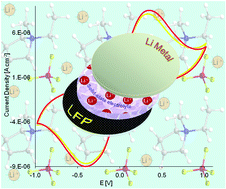Replacement of volatile and combustible electrolytes in conventional lithium batteries is desirable for two reasons: safety concerns and increase in specific energy. In this work we consider the use of an ionic organic plastic crystal material (IOPC), N-ethyl-N-methylpyrrolidinium tetrafluoroborate, [C2mpyr][BF4], as a solid-state electrolyte for lithium battery applications. The effect of inclusion of 1 to 33 mol% lithium tetrafluoroborate, LiBF4, into [C2mpyr][BF4] has been investigated over a wide temperature range by differential scanning calorimetry (DSC), impedance spectroscopy, cyclic voltammetry and cycling of full Li|LiFePO4 batteries. The increases in ionic conductivity by orders of magnitude observed at higher temperature are most likely associated with an increase in Li ion mobility in the highest plastic phase. At concentrations >5 mol% LiBF4 the ionic conductivity of these solid-state composites is comparable to the ionic conductivity of room temperature ionic liquids. Galvanostatic cycling of Li|Li symmetrical cells showed that the reversibility of the lithium metal redox reaction at the interface of this plastic crystal electrolyte is sufficient for lithium battery applications. For the first time we demonstrate an all solid state lithium battery incorporating solid electrolytes based on IOPC as opposed to conventional flammable organic solvents.

You have access to this article
 Please wait while we load your content...
Something went wrong. Try again?
Please wait while we load your content...
Something went wrong. Try again?


 Please wait while we load your content...
Please wait while we load your content...